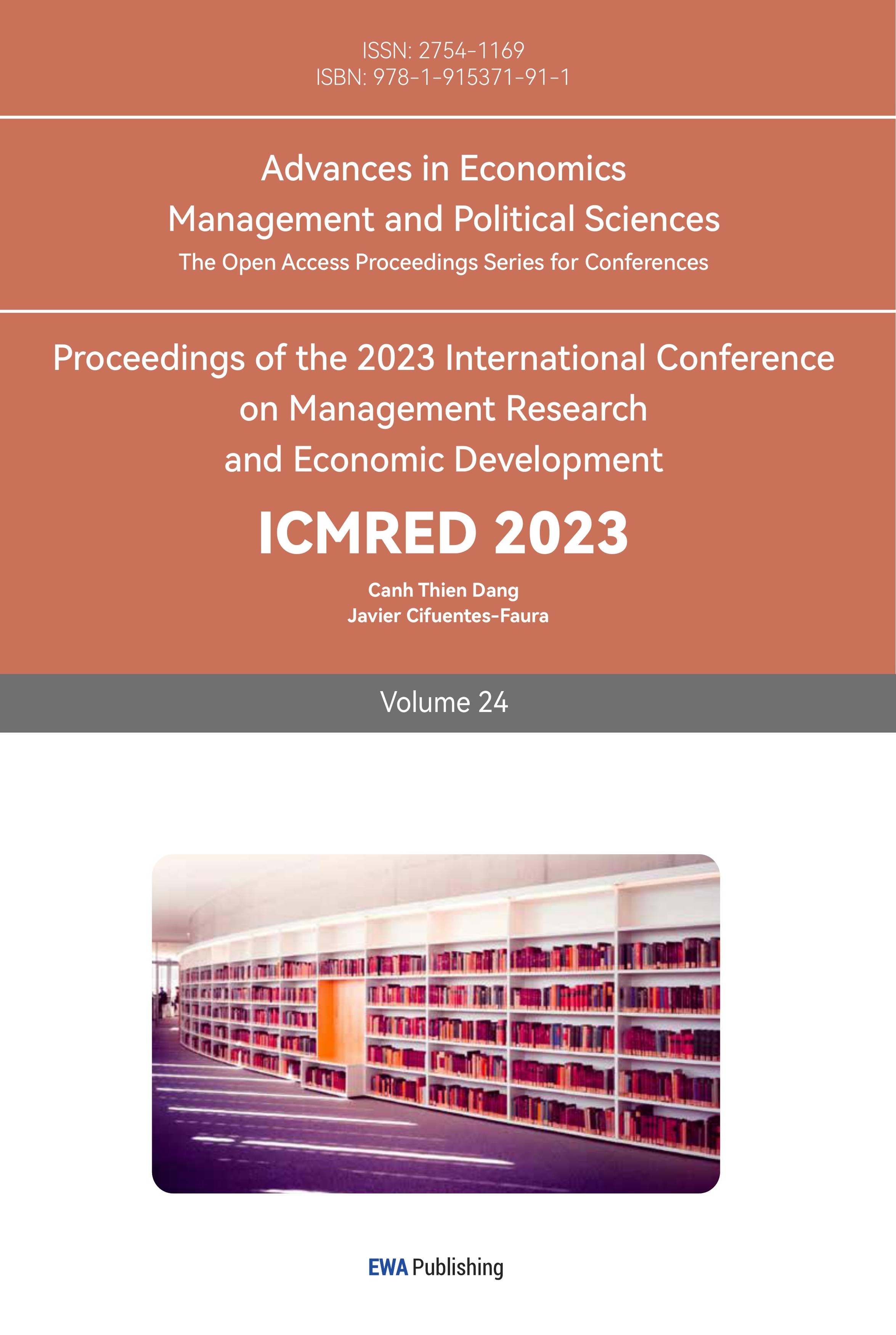References
[1]. Bloch, H. (2018). Neo-Schumpeterian price theory with Sraffian and post-Keynesian elements. Journal of Evolutionary Economics, 28(5), 1035-1051.
[2]. Bhaduri, A. (2011). A contribution to the theory of financial fragility and crisis. Cambridge Journal of Economics, 35(6), 995-1014.
[3]. Centeno, M. A., Nag, M., Patterson, T. S., Shaver, A., & Windawi, A. J. (2015). The emergence of global systemic risk. Annual Review of Sociology, 41, 65-85.
[4]. Wang, G. J., Jiang, Z. Q., Lin, M., Xie, C., & Stanley, H. E. (2018). Interconnectedness and systemic risk of China's financial institutions. Emerging Markets Review, 35, 1-18.
[5]. Martin, R., Sunley, P., Gardiner, B., & Tyler, P. (2016). How regions react to recessions: Resilience and the role of economic structure. Regional Studies, 50(4), 561-585.
[6]. Bristow, G., & Healy, A. (2015). Crisis response, choice and resilience: insights from complexity thinking. Cambridge Journal of Regions, Economy and Society, 8(2), 241-256.
[7]. Ye, J., & Luo, X. (2022). A study on China’s cultural product export trade and its forecast based on hausmann’s export complexity. Wireless Communications and Mobile Computing, 2022, 1-6.
[8]. Xu, Y., & Warner, M. E. (2015). Understanding employment growth in the recession: the geographic diversity of state rescaling. Cambridge Journal of Regions, Economy and Society, 8(2), 359-377.
[9]. National Bureau of Statistics of China,http://www.stats.gov.cn/
[10]. Eraydin, A. (2016). Attributes and characteristics of regional resilience: Defining and measuring the resilience of Turkish regions. Regional Studies, 50(4), 600-614.
Cite this article
Xu,J. (2023). Research on the Characteristics of Economic Resilience under the Financial Crisis-Taking China as an Example. Advances in Economics, Management and Political Sciences,24,155-159.
Data availability
The datasets used and/or analyzed during the current study will be available from the authors upon reasonable request.
Disclaimer/Publisher's Note
The statements, opinions and data contained in all publications are solely those of the individual author(s) and contributor(s) and not of EWA Publishing and/or the editor(s). EWA Publishing and/or the editor(s) disclaim responsibility for any injury to people or property resulting from any ideas, methods, instructions or products referred to in the content.
About volume
Volume title: Proceedings of the 2023 International Conference on Management Research and Economic Development
© 2024 by the author(s). Licensee EWA Publishing, Oxford, UK. This article is an open access article distributed under the terms and
conditions of the Creative Commons Attribution (CC BY) license. Authors who
publish this series agree to the following terms:
1. Authors retain copyright and grant the series right of first publication with the work simultaneously licensed under a Creative Commons
Attribution License that allows others to share the work with an acknowledgment of the work's authorship and initial publication in this
series.
2. Authors are able to enter into separate, additional contractual arrangements for the non-exclusive distribution of the series's published
version of the work (e.g., post it to an institutional repository or publish it in a book), with an acknowledgment of its initial
publication in this series.
3. Authors are permitted and encouraged to post their work online (e.g., in institutional repositories or on their website) prior to and
during the submission process, as it can lead to productive exchanges, as well as earlier and greater citation of published work (See
Open access policy for details).
References
[1]. Bloch, H. (2018). Neo-Schumpeterian price theory with Sraffian and post-Keynesian elements. Journal of Evolutionary Economics, 28(5), 1035-1051.
[2]. Bhaduri, A. (2011). A contribution to the theory of financial fragility and crisis. Cambridge Journal of Economics, 35(6), 995-1014.
[3]. Centeno, M. A., Nag, M., Patterson, T. S., Shaver, A., & Windawi, A. J. (2015). The emergence of global systemic risk. Annual Review of Sociology, 41, 65-85.
[4]. Wang, G. J., Jiang, Z. Q., Lin, M., Xie, C., & Stanley, H. E. (2018). Interconnectedness and systemic risk of China's financial institutions. Emerging Markets Review, 35, 1-18.
[5]. Martin, R., Sunley, P., Gardiner, B., & Tyler, P. (2016). How regions react to recessions: Resilience and the role of economic structure. Regional Studies, 50(4), 561-585.
[6]. Bristow, G., & Healy, A. (2015). Crisis response, choice and resilience: insights from complexity thinking. Cambridge Journal of Regions, Economy and Society, 8(2), 241-256.
[7]. Ye, J., & Luo, X. (2022). A study on China’s cultural product export trade and its forecast based on hausmann’s export complexity. Wireless Communications and Mobile Computing, 2022, 1-6.
[8]. Xu, Y., & Warner, M. E. (2015). Understanding employment growth in the recession: the geographic diversity of state rescaling. Cambridge Journal of Regions, Economy and Society, 8(2), 359-377.
[9]. National Bureau of Statistics of China,http://www.stats.gov.cn/
[10]. Eraydin, A. (2016). Attributes and characteristics of regional resilience: Defining and measuring the resilience of Turkish regions. Regional Studies, 50(4), 600-614.









